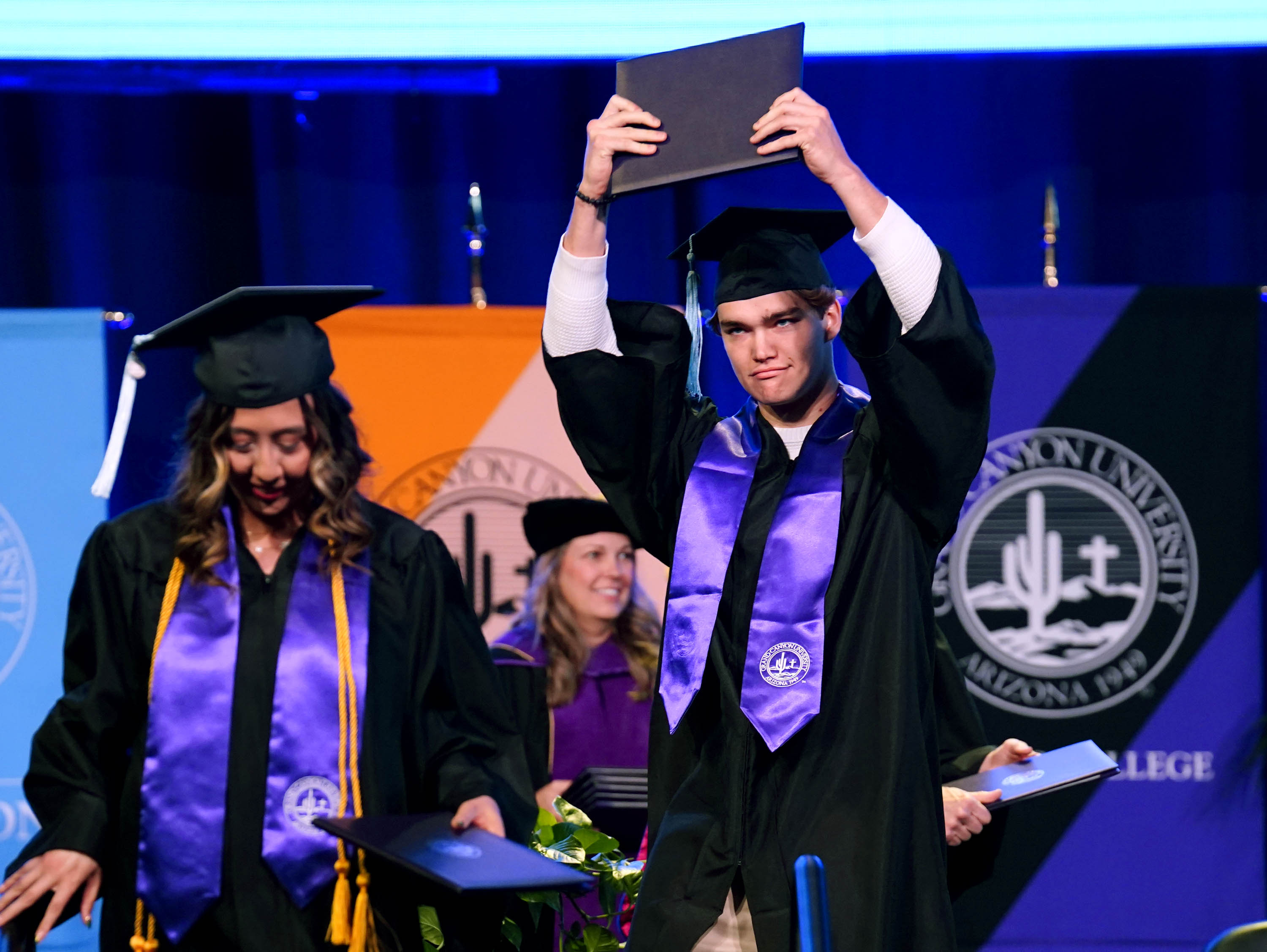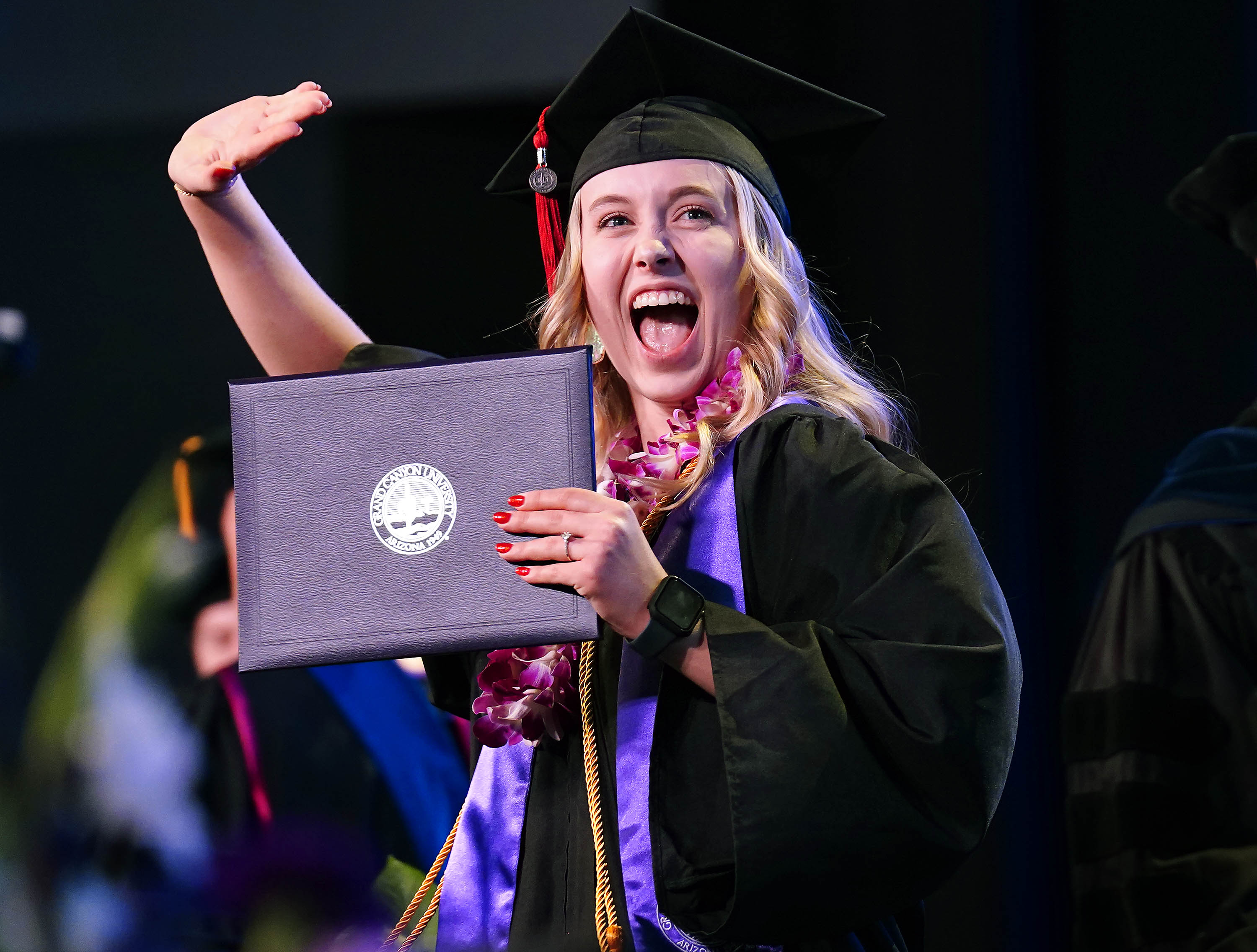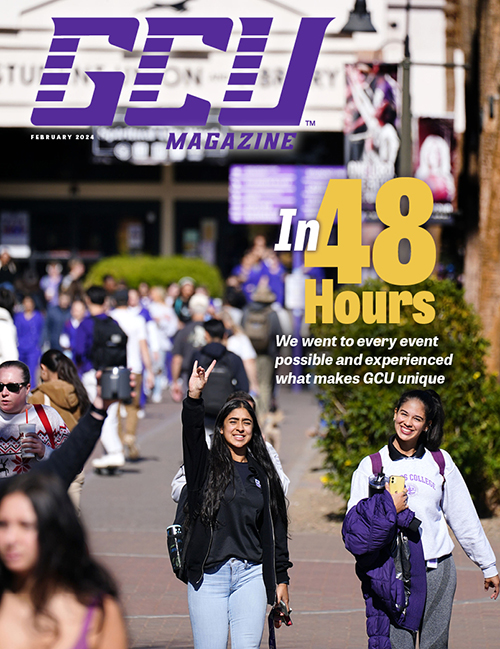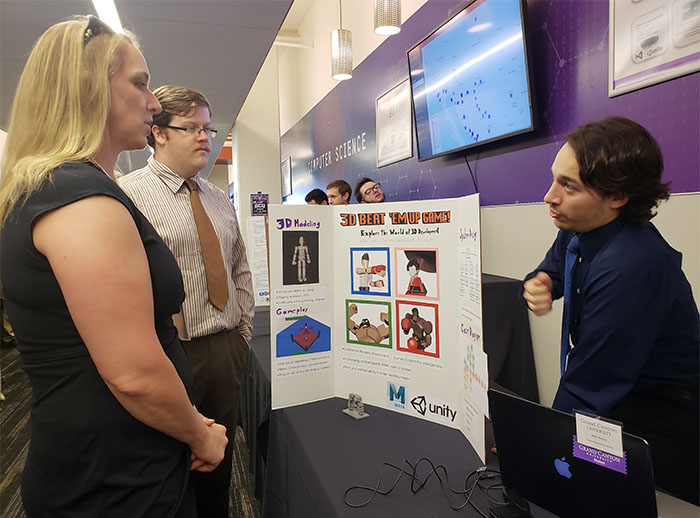
By Lana Sweeten-Shults
GCU News Bureau
Aldo Nuñez has the world on a string.
To be more precise, he has it on a 3D, pixel-generated, animated string thanks to the Grand Canyon University computer science major’s project, the "3D Beat ’Em Up!" game. In it, he digitally attaches yellow lines – animated strings of sorts – to certain areas of characters' skeletal framework to control their movements via the click of a mouse.
The game was just one of about two dozen projects computer science and computer programming students demonstrated as part of the recent Technology Capstone Showcase in the Technology Building.
The projects are the culmination of what the students have learned over their four years at GCU – the big show, if you will. The projects in the first semester are in the design-and-planning phase and will gear up to the implementation phase in the second semester.
About 40 industry professionals, along with faculty and students, weaved through the bustling hallway on the Technology Building's second floor, just outside the new Esports Arena, to view the projects: a smattering of video games, data-crunching apps, interactive dashboards, machine-learning programs and the like. The showcase gave students the opportunity to step outside their classrooms and share their work with companies looking for interns and employees.
Nuñez and partners Zachary Ankenbrandt and Ali Cooper are in the beginning stages of programming their “neat little fighting game.” When the game is complete next spring, the main character will fight through three levels as he and three boss characters dole out hits, dodges, block attacks and more.
It is through augmented reality that the characters appear -- a technology in which real-world objects, in this case, pieces of paper on a table, are “augmented” by computer-generated sensory information.
Nuñez motioned to another screen where he shows what the characters looked like initially – skeletal-like outlines.
“Right now he’s working out all the rigging,” Ankenbrandt said. “He is setting up a skeleton for the character models so he can design how they’ll move.”
Nuñez, who has a knack for 3D modeling, said this project has allowed him and his teammates to explore the world of 3D development and to meld two worlds he loves – art and programming.
“I wanted to challenge myself in adapting both and hopefully will have a finished product (by the spring),” he said.
Fighting financial crimes
A little farther down the hallway, the fun of the "3D Beat 'Em Up!" game gave way to a big data analytics project on analyzing financial fraud associated with human and drug trafficking.
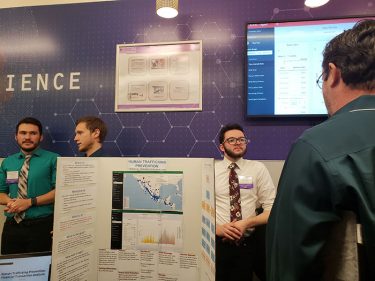
During the 2017-18 academic year, GCU interns connected with Tempe-based TRAC -- the Transaction Record Analysis Center, funded by the Arizona Financial Crimes Task Force. Two of those students have graduated, but a second group of Cyber Lopes is continuing to work with the center. TRAC houses a centralized, searchable database of the financial transactions of global money businesses such as Western Union.
“They analyze data, and it’s all pertaining to fraud. It could be human trafficking, it could be drugs,” said Thomas Fowler, one of the senior Computer Science Big Data Analytics students working on the project with teammates Thomas Gleason and Joshua Lee. "We’re basically seeing what we can do with that data -- just looking at various statistics, getting feedback ...”
The team is developing a suite of interactive, screen-based apps that will ingest all that financial data and produce fraud charts, graphs and other visualizations along with statistical analysis. The goal is to create a dashboard for the center with hopes it will help organizations such as Arizona law enforcement.
“Before any of this was built out, even from last year, they would have to do everything manually,” said Lee. “Our boss said that he would spend one or two weeks doing what our application can do in a minute, so it saves a lot of time.”
One of the data sets the team is looking into relates to human trafficking. As the team has discovered, human traffickers use money transfers to purchase people. They say technology like this could help law enforcement in fighting human trafficking because an app that ingests all that data provides a bigger picture of the problem. As it is now, the data is segmented.
“Since we’ve been working at TRAC, we’ve been adding a lot of different enhancements and extra tools to that application. It’s really meant to help them save a lot of time, money, being able to respond and communicate faster with law enforcement and everyone involved,” Fowler said. “It’s a really cool project.”
He added, “We are basically computer science guys that are applying the skills we’ve learned in our classes.”
Analyzing health care data
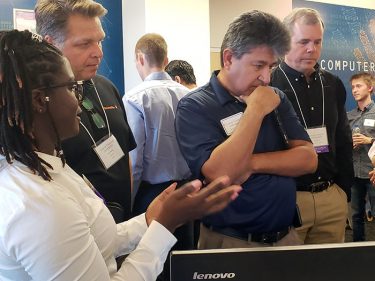
Students Dinh Minh Tran and Fon Vena also took time to speak with industry leaders about their health care data analysis project.
Tran and Vena are working with an Arizona State University team to create an interactive data analytic dashboard health care professionals can use to predict future health care trends, Tran said.
Vena said she sees this app being beneficial to researchers: “If you’re a researcher focused on health care data, instead of going online to get the raw data and trying to use Microsoft Excel or other methods to analyze data, you can just come on the dashboard.”
She added that, using machine learning, the app can “train the data” when a user plugs in certain patient characteristics. For example, the app can predict whether a user is at risk for a certain condition, such as diabetes.
Machine learning
Speaking of machine learning, Matthew Jibben and Natalie Kidd are taking a cue from “WarGames” with their senior capstone project. In the 1983 film, Professor Stephen Falken, billed as an early artificial intelligence researcher, “teaches” a computer about strategy by programming it to play such games as chess and checkers.
In their project, Jibben and Kidd wonder if they can create a neural network that can play a game as well as or better than the average human. So they decided to explore artificially intelligent gameplay.
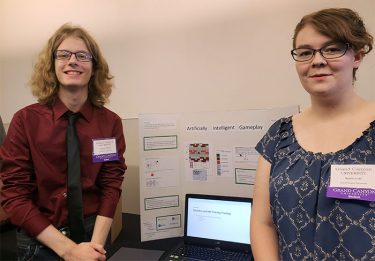
“It’s an AI (artificial intelligence) that’s going to play Frogger or other games that we give it,” Kidd said of the project.
In the field of machine learning, a lot of research goes into modeling how the human brain works, and programmers have been trying to replicate what the brain does through artificial neural networks. Those networks have been bumped to the nth degree these days through a genetic algorithm called NEAT, Jibben said, “which evolves neural networks.”
NEAT stands for NeuroEvolution of Augmenting Topologies.
“It’s a type of neural network that’s able to solve things faster,” Kidd said.
Tim Kelley, Assistant Professor of Entrepreneurship and Economics at GCU, attended the Technology Capstone Showcase to see some of the innovative work of GCU’s computer science and computer programming students – and to plant the seed of turning those ideas into businesses. He encouraged a few students to enter the Canyon Challenge business plan competition and to get involved with the IDEA club, which provides resources for budding entrepreneurs.
"There were some great projects, and I love to see our students solving real problems," he said.
Diane Kuhler Madison of Waybright Technology Academy, one of the industry professionals at the showcase, was excited to keep up with the latest technology innovations as she visited project after project: “We’re getting our finger on the pulse of what’s going on in the industry,” she said ... and saw firsthand how GCU’s technology students are doing just that.
Contact GCU senior writer Lana Sweeten-Shults at [email protected] or at 602-639-7901.

